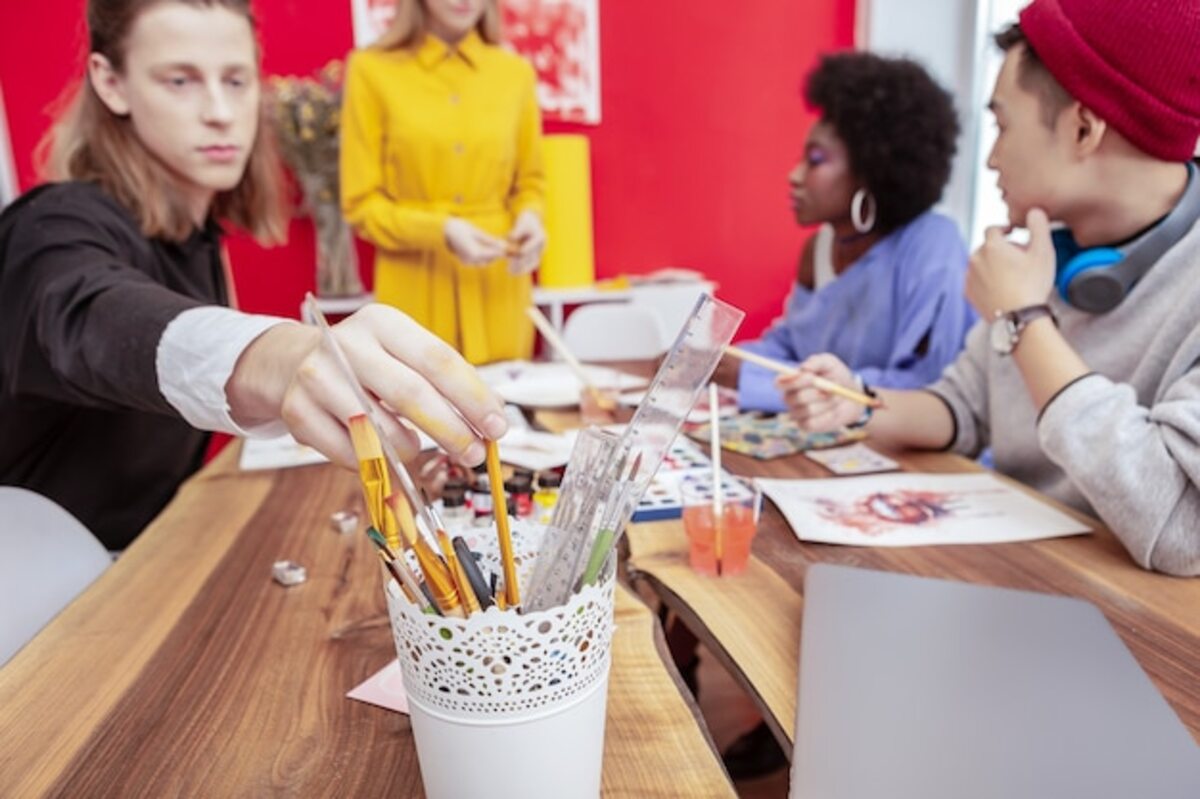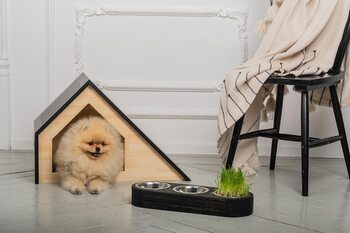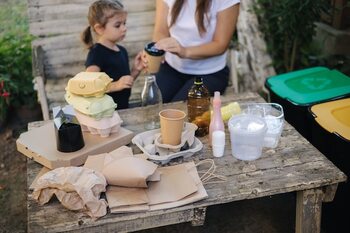Turning the condominium into a space for collective creativity.

Transforming your condominium into a space for collective creativity can change not only your home but also the community around you. Imagine a place where ideas flow, passions are shared, and neighbors become accomplices in creative projects. This article will guide you through practical strategies to foster a collaborative environment, enriching life in condominiums and creating meaningful connections among residents. It’s time to unleash collective creativity and enjoy a more vibrant and inspired life!
The importance of common space in fostering creativity
The common space in a condominium plays a crucial role in promoting collective creativity. These spaces, which can include gardens, meeting rooms, or recreational areas, are the perfect setting for residents to share ideas and collaborate on projects. The physical layout of these places can inspire people to step out of their comfort zone, interact with their neighbors, and explore new forms of artistic expression. By creating an accessible and welcoming environment, active participation from all community members is encouraged, which in turn fosters a sense of belonging and commitment to the place where they live.
Furthermore, the design and functionality of the common space can significantly influence the social dynamics of the condominium. A well-lit area decorated with artistic elements can become a magnet for those seeking inspiration or a creative outlet. Organizing workshops, exhibitions, or cultural events in these areas can encourage collaboration among residents, allowing each person to contribute their unique talent to the group. In this sense, transforming the common space into a creative hub not only benefits individuals but also strengthens community ties, establishing a support network where ideas can thrive freely.
2. Group activities: how to organize artistic workshops
To organize artistic workshops in a condominium, it is essential to start by identifying the interests and skills of the residents. An initial meeting can be the first step to understanding what types of activities generate the most enthusiasm: painting, sculpture, photography, or even crafting. This survey not only helps to select the themes to be addressed, but also encourages the active participation of the neighbors from the beginning of the process. By involving everyone in the planning, a sense of belonging and community is created, which is vital for the success of group activities.
Once the interests are defined, it is important to establish a workshop schedule that is accessible to everyone. Consider flexible hours and common spaces in the condominium that can accommodate these creative sessions, such as lounges or patios. Additionally, you can invite local artists or provide online guides to enrich the experience. Don't forget to foster an inclusive environment where each participant feels valued and motivated to express their creativity without fear of judgment. The key is to celebrate each created work and share meaningful moments among neighbors, thus strengthening community ties while unleashing collective imagination.
3. Community projects: from urban gardens to collective murals
Community projects are an excellent way to bring residents together and transform shared space into a vibrant and welcoming place. Starting an urban garden is an option that not only fosters collaboration but also promotes sustainability. Neighbors can work together to grow vegetables, herbs, and flowers, learning about gardening while sharing knowledge and resources. Additionally, by harvesting together, moments of celebration and collective learning are generated, strengthening the bonds among participants. These types of initiatives make the condominium feel more like a shared home and less like a mere physical space.
Another creative idea is the creation of collective murals that beautify the walls of the condominium. Inviting local artists or the residents themselves to participate in the design allows for the expression of the community's unique identity. Through workshops where everyone can contribute ideas and collaborate in the painting, not only is an impressive artistic work achieved, but also a sense of belonging and inclusion. These murals can serve as meeting points for community events or simply as a visual reminder of the collective effort made by all. At the end of the day, both urban gardens and collective murals are perfect examples of how teamwork can transform common spaces into places full of life and inspiration.
4. Creating inspiring corners: decorating shared areas
The decoration of shared areas is an excellent way to foster collective creativity in a condominium. By transforming hallways, living rooms, or patios into inspiring corners, residents are invited to actively participate in the process. For example, murals can be established where each neighbor contributes their personal touch, using paint or recycled materials. These spaces not only serve as visual meeting points, but also stimulate interaction and the exchange of ideas among the inhabitants, creating a sense of belonging and community.
Another key aspect of decorating shared areas is choosing elements that reflect the diversity and stories of the residents. Incorporating plants, modular furniture, and local artwork can help create a welcoming and stimulating environment. Additionally, considering the functionality of the space is essential; community tables for workshops or events allow people to easily gather to share skills or engage in creative activities together. With these strategies, every corner of the condominium becomes a testament to the collaborative and creative spirit that defines the community.
5. Promoting the exchange of skills among neighbors
Encouraging the exchange of skills among neighbors is a powerful way to cultivate a creative environment in your condominium. By organizing workshops and learning sessions, you can invite residents with different talents to share their knowledge. Imagine someone who knows how to paint offering art classes, while another neighbor who is an expert in gardening teaches about how to care for plants. These activities not only strengthen individual skills but also create deeper bonds among community members, turning the building into a true collaborative home. Furthermore, this exchange can go beyond the artistic or practical; cultural exchanges can be encouraged where each neighbor shares traditions and recipes from their country or region. This allows for the creation of an inclusive and diverse atmosphere where everyone feels valued and respected. By promoting these regular gatherings, not only is collective creativity stimulated, but a strong support network among the residents of the condominium is also built, transforming each common space into a place where ideas shine and friendships flourish.
6. Technology as an ally in creative collaboration
Technology has become a fundamental catalyst for creative collaboration in condominiums, facilitating connections between residents in ways that were previously impossible. Tools like instant messaging apps, project management platforms, and social media allow neighbors to share ideas, coordinate efforts, and foster teamwork. Imagine a group of residents using an app to organize art workshops or brainstorming sessions where everyone can contribute their vision, whether they are in their apartments or in common areas of the building. This ability to communicate quickly and collaborate from anywhere transforms the shared space into a hotbed of creativity.
Additionally, technology offers unique opportunities to document and celebrate collective achievements. Through community blogs or social media dedicated to the condominium, residents can share the progress of their creative projects, from collaborative murals to cultural events. This exchange not only promotes a sense of belonging and identity within the condominium but also attracts external attention to the creative initiatives that are emerging. By integrating technology into the creative process, a continuous cycle is established where ideas are inspired by others and turn into tangible actions that enrich community life.
7. Successful examples of creative condominiums in Costa Rica
In Costa Rica, several condominiums have managed to stand out for their focus on collective creativity, transforming common spaces into true hubs of innovation and collaboration. A notable example is the condominium "Arte y Vida," where residents have turned shared areas into open-air art galleries. With monthly exhibitions showcasing works by local artists and artistic workshops open to all, this space not only fosters individual creativity but also strengthens community ties, making it a cultural reference for the neighborhood. The active participation of the neighbors has allowed each corner to tell a unique story, reflecting the cultural richness of the region. Another successful case is the condominium "EcoComunidad," where a community garden has been implemented that includes urban farms and spaces for ecological activities. Residents collaborate to grow their own food while learning about sustainability and environmental care. This approach not only provides fresh products to the neighbors but also creates a sense of belonging and shared responsibility towards the environment. By organizing exchange fairs and gardening workshops, this condominium has become a model for those interested in combining creativity and positive social impact within their own community.
In these examples, the key to success lies in the active participation of residents and the willingness to collaborate to create something greater than themselves. The combination of art, sustainability, and social interaction demonstrates how condominiums in Costa Rica are successfully transforming their spaces into true platforms for collective creativity. By inspiring others with these creative initiatives, a path is opened toward a richer and more inspiring community life.
8. How to measure the positive impact of collective creativity in your community
Measuring the positive impact of collective creativity in your community may seem challenging, but there are several effective ways to assess the changes that occur. One simple method is through regular surveys among residents, asking them about their overall satisfaction and well-being in the condominium. These surveys can include questions about participation in creative activities, sense of belonging, and relationships with neighbors. Additionally, holding periodic meetings to discuss shared experiences can provide qualitative insight into how these initiatives have influenced social cohesion and the atmosphere of the place.
Another approach is to observe the tangible results of creative initiatives, such as the creation of community murals, collaborative gardens, or artistic events. The number of developed projects and active participation can be clear indicators of the positive impact that fostering a creative space has. You can also keep a photographic or audiovisual record that documents these activities, allowing all residents to see how their efforts have transformed the environment and strengthened community ties. In this way, you will not only celebrate the achievements reached, but you will also inspire more people to get involved in future creative initiatives.



